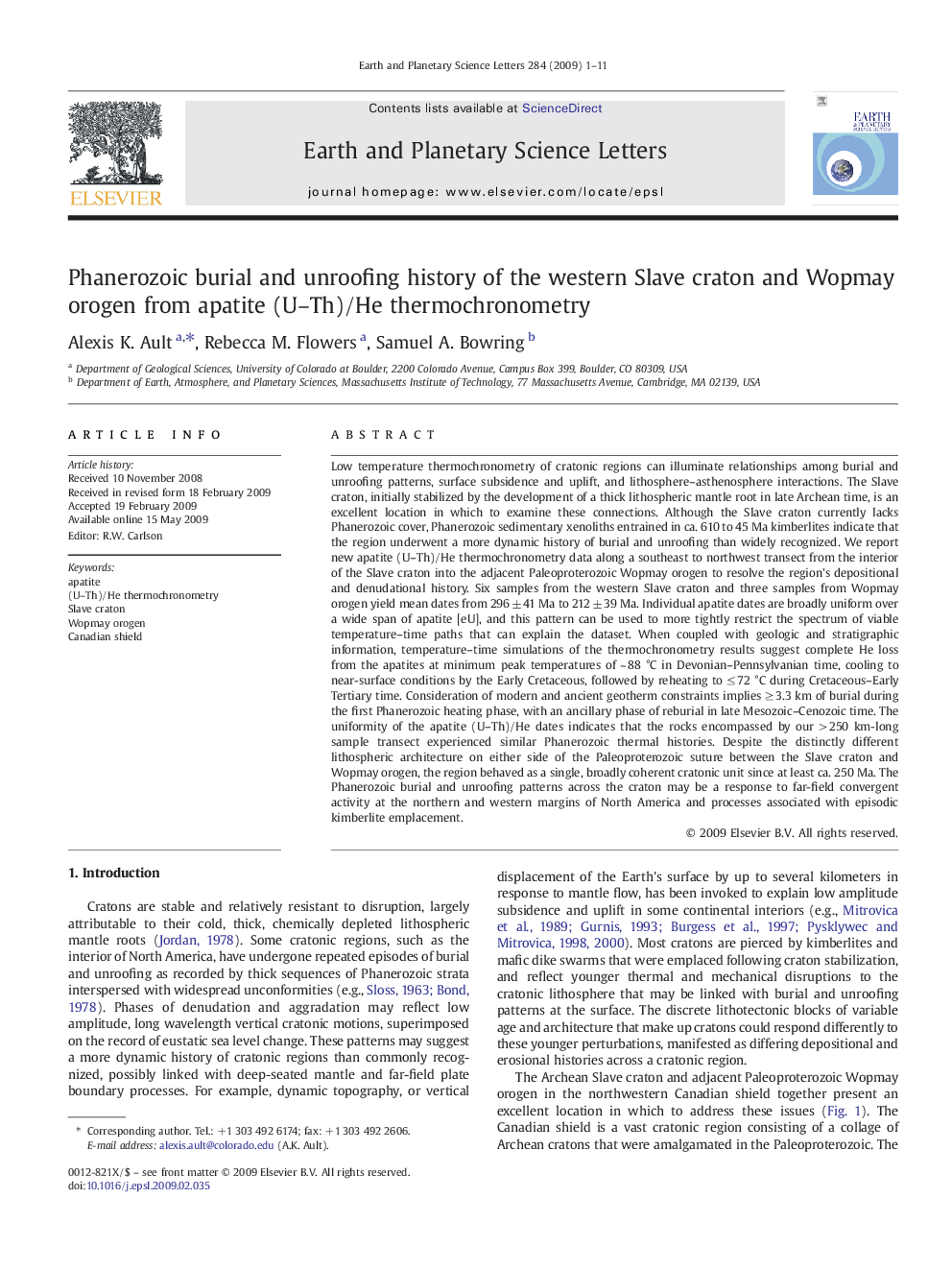| کد مقاله | کد نشریه | سال انتشار | مقاله انگلیسی | نسخه تمام متن |
|---|---|---|---|---|
| 4679191 | 1634871 | 2009 | 11 صفحه PDF | دانلود رایگان |

Low temperature thermochronometry of cratonic regions can illuminate relationships among burial and unroofing patterns, surface subsidence and uplift, and lithosphere–asthenosphere interactions. The Slave craton, initially stabilized by the development of a thick lithospheric mantle root in late Archean time, is an excellent location in which to examine these connections. Although the Slave craton currently lacks Phanerozoic cover, Phanerozoic sedimentary xenoliths entrained in ca. 610 to 45 Ma kimberlites indicate that the region underwent a more dynamic history of burial and unroofing than widely recognized. We report new apatite (U–Th)/He thermochronometry data along a southeast to northwest transect from the interior of the Slave craton into the adjacent Paleoproterozoic Wopmay orogen to resolve the region's depositional and denudational history. Six samples from the western Slave craton and three samples from Wopmay orogen yield mean dates from 296 ± 41 Ma to 212 ± 39 Ma. Individual apatite dates are broadly uniform over a wide span of apatite [eU], and this pattern can be used to more tightly restrict the spectrum of viable temperature–time paths that can explain the dataset. When coupled with geologic and stratigraphic information, temperature–time simulations of the thermochronometry results suggest complete He loss from the apatites at minimum peak temperatures of ~ 88 °C in Devonian–Pennsylvanian time, cooling to near-surface conditions by the Early Cretaceous, followed by reheating to ≤ 72 °C during Cretaceous–Early Tertiary time. Consideration of modern and ancient geotherm constraints implies ≥ 3.3 km of burial during the first Phanerozoic heating phase, with an ancillary phase of reburial in late Mesozoic–Cenozoic time. The uniformity of the apatite (U–Th)/He dates indicates that the rocks encompassed by our > 250 km-long sample transect experienced similar Phanerozoic thermal histories. Despite the distinctly different lithospheric architecture on either side of the Paleoproterozoic suture between the Slave craton and Wopmay orogen, the region behaved as a single, broadly coherent cratonic unit since at least ca. 250 Ma. The Phanerozoic burial and unroofing patterns across the craton may be a response to far-field convergent activity at the northern and western margins of North America and processes associated with episodic kimberlite emplacement.
Journal: Earth and Planetary Science Letters - Volume 284, Issues 1–2, 30 June 2009, Pages 1–11